Some thrived, some lagged behind, but there’s more hurdles to come for the UK’s Top 150 food & drink suppliers
Click here to download the full OC&C Top 150 table
Covid created an industry of winners and losers. While those supplying supermarkets enjoyed unprecedented sales growth, out-of-home players hit a wall.
But it looks like this was simply the warm-up race. The coming wave of inflation, alongside intensifying supply chain and labour issues, pose fundamental threats to the entire industry – and could have an even more profound impact than Covid.
So what shape is the industry in as it prepares to face potentially its toughest challenge yet?
Despite popular perceptions, the OC&C Top 150 study of the biggest food and drink suppliers in the UK suggests Covid was not a boon for the industry. Overall 2020 revenue growth was the lowest for four years, with aggregate sales up just 1.1%. That’s down from 1.9% in 2019 and 4.3% in 2018.
What’s more, this growth rate was just 0.2 percentage points higher than inflation. Not only is this well below the long-term average of 4.9%, but it’s the lowest for 20 years – with the exception of zero-growth years in 2015 and 2016.
This weakness appears to fly in the face of double-digit UK grocery growth throughout much of the pandemic. OC&C managing partner Will Hayllar explains the figures reflect how strong growth for some suppliers and channels has been offset by a “complete collapse” in others. Essentially, the pandemic created a much wider gap between the winners and losers. Some 26 suppliers grew their revenues by more than 10%, while 20 saw a double-digit decline.
Brands were one of the winners. The over-performance of large grocers and online grocery supported their growth, while the slowdown of the discounters and foodservice hit own label. Over the 150, branded suppliers saw organic growth of 2.5%, up from 1% last year. Meanwhile, own label posted its first period of decline since OC&C started measuring it in 2004 – a marked reversal on its 2.8% growth last year.
The pandemic also favoured larger players over smaller rivals. Those with £500m+ sales grew by 2.9% compared to 1.5% last year – while those with revenues under £500m were up just 0.9%, down from 2.6%.
“The retailers deprioritised niche, craft brands during the pandemic,” says Rothschild & Co’s global head of consumer Akeel Sachak. “It gives opportunities for the big groups to consolidate that position by investing properly in areas like marketing and innovation.”
The winners and losers effect is also visible on a category basis. Meat, fish and poultry is up 4.7%, ambient suppliers are up 4.6% and the bakery sector is up 3.4%. On the flip side, prepared meals and soft drinks plunged 8.7% and 8.9% respectively.
Notably Covid also exacerbated the effects of Brexit on export sales, with Top 150 international revenues down 1.2% compared to 2.1% growth in the UK.
M&A brushes off Covid constraints
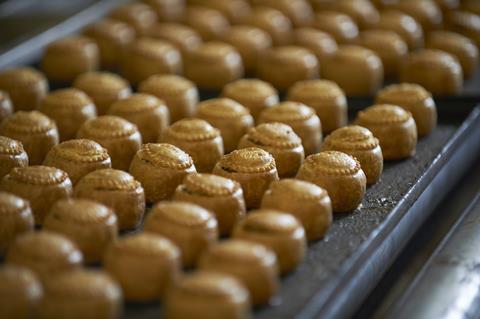
UK food and drink M&A held up well in 2020 despite the disruptive forces of Covid and Brexit.
A total of 13 deals involving Top 150 suppliers were completed in 2020, up from 12 in 2019.
Houlihan Lokey’s Shaun Browne points out Covid did affect deal flow, with a muted period at the start of 2020 and a “very busy” end to the year. That has carried into 2021 as “everyone realised the pandemic was not going to kill the economy”.
This year has seen a notable uptick in activity, with 24 UK deals announced already and 15 of those completed, including the £1.7bn megadeal for Valeo Foods from Bain Capital.
One of the key drivers is the mounting wall of money to invest, both on the balance sheets of big corporates and private investors, due to the availability of cheap debt. “When people are sitting with money to invest, the food and drink sector looks a relatively safe place to put some of that cash,” says OC&C’s Will Hayllar.
Rothschild’s Akeel Sachak also notes Covid has led to more willing sellers as “the pantry-loading effect of Covid” flattered performance.
Private equity has been particularly active, with around 30% of deals involving a PE buyer in 2021 to date. That’s on top of 2020 deals such as PAI Partners acquiring Addo Food Group and Winterbotham Darby.
The structural drivers for M&A remain strong, whether it be larger companies looking to shake up their portfolios by selling slow- growing or underperforming assets, or investors looking for exposure to fast-growing pockets of the industry. The latter has been a particular tailwind for M&A, as the rapid growth of e-commerce has left brands with a strong digital or DTC presence in high demand.
However, after a spike of activity in early 2021, deal flow has dropped off as current headwinds – including staff shortages, input cost inflation and concerns over consumer confidence – have suppressed activity.
“Inflation will make PE a bit more cautious than they were a year ago,” says Sachak. “A lot will not have had experience of inflation in the food market and also, as the out-of-home channels continue to open up post-Covid, some of those food groups won’t show the same kind of growth figures as during the pandemic.” And interest rates hikes would also see the end of cheap debt.
Return to normality?
These effects are unlikely to be long-lasting. Many of the Covid-induced shifts in the market – whether good or bad – have unwound within months of lockdown restrictions easing. As Warburtons chairman Jonathan Warburton comments: “The benefits in terms of the performance of the business were very welcome, but we always knew it had a limited shelf life. Like all things in life you tend to make your own luck and that will come back to the longer-term growth strategy.”
There are some exceptions to the rule – OC&C partner Nilpesh Patel points to more permanent shifts in behaviour like scratch cooking, the growth of frozen and rise of online. But there are “definitely areas where we’ve seen almost a complete rebound already”, he says. “The out-of-home channel has rebounded strongly and retailers are reintroducing insurgent brands that struggled in the depths of lockdowns.”
Still, the environment for food and drink players is far from normal. Since the end of the Covid period, the industry has faced a mix of spiking input costs and global supply chain constraints.
“The out-of-home channel has rebounded strongly and retailers are reintroducing insurgent brands that struggled in the depths of lockdowns”
The industry is facing the “worst commodity inflation since 2008”, Jefferies consumer goods analyst Martin Deboo notes. That contrasts with subdued commodities prices during Covid, which helped the Top 150 improve profit margins by 0.2ppts to 5.9%.
“In the latter half of 2020 the industry was in a ‘goldilocks period’ of high growth and low inflation so they were getting all the operating leverage of volume growth with none of the penalty,” Deboo says.
Some categories will be more affected by the spike in input costs than others – for example coffee and dairy. Nonetheless it is an intensifying issue for all.
The only comfort is that the industry has overcome equally challenging situations before. Charles Hall, head of research at Peel Hunt, points to the sharp rise in oil prices a decade ago and the post-Brexit slump in the pound. “Inflation for this industry and food retailers is not necessarily a bad thing,” he argues. “Outwardly they will say they’re fighting to keep costs down for hard-working families, but in reality a bit of food price inflation is probably helpful.”
OC&C 150: top performers
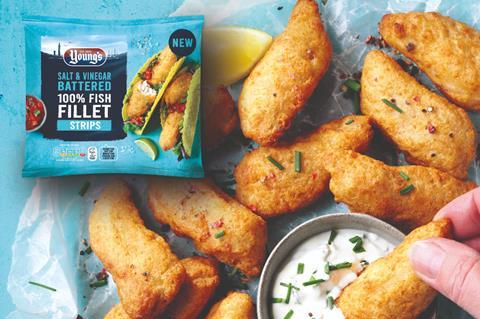
Eight Fifty Food Group
Turnover growth: 14.7%
Operating margin: 0.6% (+1.1ppts)
Snapped up by Canadian multi-protein producer Sofina Foods, the Young’s Seafood and Karro owner consolidated the pork and seafood sector to leverage relationships with big retailers. Organic sales were boosted by category growth in Covid and a push into more premium products, while profitability improved due to cost controls and vigilant use of capex.
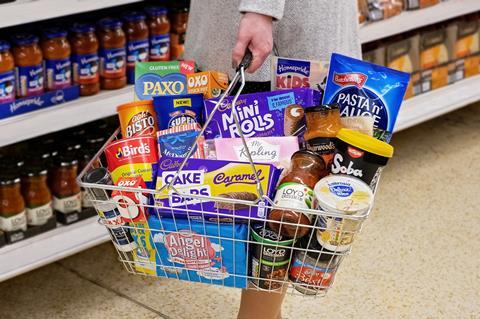
Premier Foods
Turnover growth: 9.7%
Operating margin: 16.4% (+4.8ppts)
One of the standout successes of Covid, Premier Foods benefited from the growth in ambient goods. But its success was also down to long-term brand rejuvenation and investment in key ranges. NPD has been a particular feature, with the launch of a Plantastic plant-based range and healthier options for brands like Mr Kipling, Sharwood’s and Ambrosia.
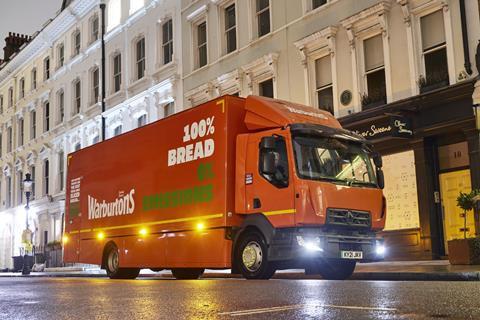
Warburtons
Turnover growth: 10.4%
Operating margin: 4.4% (+0.6ppts)
The UK’s number one wrapped bread brand owes much of its strong performance to its strategic shift away from its core product. The brand has seen strong growth in bagels and crumpets as well as premiumisation through the launch of Ellie Warburtons Cakes. A £56m investment plan for non-bread bakery will underpin further diversification.
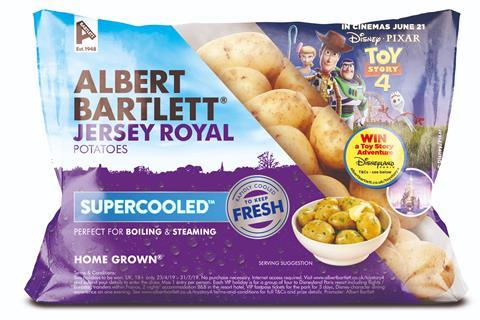
Albert Bartlett
Turnover growth: 18.5%
Operating margin: 4.4% (+1.1ppts)
Continued investment behind newer chilled operations and a focus on added-value NPD has driven top and bottom line growth at the Scottish potato supplier. Production capacity has grown to meet rising demand for its chilled ranges, while core fresh and products have been boosted by NPD, including the addition of Scottish cherries to its Scotty Brand offering.
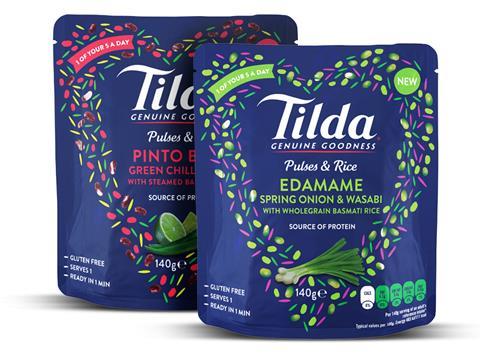
Tilda
Turnover growth: 11.4%
Operating margin: 13.4% (+1.2ppts)
The UK’s leading rice brand reaped the rewards of a spike in demand during the pandemic, with Tilda increasing production and offering larger bags than rivals. But its wider return to growth under Spanish food player Ebro Foods has been underpinned by strong NPD – including new global-themed flavours and single-serve pulses and rice pouches.
Chronic labour shortages
Compounding this particular wave of inflation, though, are unprecedented stresses on the global supply chain. Most notably the chronic staffing shortages in the logistics industry, which have been exacerbated in the UK by both Covid and Brexit.
On this point, Rothschild’s Sachak believes costs will come down: “I do think it will correct itself eventually.” Tilda’s head of external affairs Jonathan Calland is similarly optimistic. “We believe the high cost should settle soon and we have observed that historically price spikes for materials are typically followed by price corrections,” he says.
There’s no underestimating the impact of staffing shortages across the industry, though. Albert Bartlett COO Colin Campbell describes the “bullet train that’s hit us all” in terms of post-Covid staff recruitment and retention. The end of the furlough period hasn’t helped increase the supply of available workers either, he says. “This isn’t a short-term hurdle, and paying a bit more money does not solve the fundamental challenge we all have,” he argues.
“We believe the high cost should settle soon. Price spikes for materials are typically followed by price corrections”
Part of the answer lies in retaining staff. While Campbell points to the overall package, including training and working conditions, Peel Hunt’s Hall also highlights the power of development opportunities and targeted bonuses.
Still, suppliers with more seasonal peaks and troughs will undoubtedly be more exposed, as they have relied more heavily on EU workers.
So an increase in prices is perhaps inevitable. “You can call it cost recovery if you like, but prices will go up because raw materials, energy, labour and distribution costs are higher,” says Houlihan Lokey co-head of UK corporate finance Shaun Browne.
Jefferies’ Deboo believes list price increases are the “final lever grocery players will pull”. First, they will look to optimise pack price mix, focus on higher ticket ranges and fine-tune promotional strategies.
However, ultimately input inflation will need to feed through to consumers – a principle that is “easy to talk about politically, but more challenging to do as a manufacturer” says Warburton.
Private equity swoops on UK supermarkets

Supermarkets faced a generational shake-up during Covid as shoppers migrated in their droves to online. But the most significant change for suppliers could be the entry of two private equity giants.
The billionaire Issa brothers’ £6.8bn deal, backed by PE player TDR Capital, to buy Walmart-owned Asda passed its last hurdle in June after receiving regulatory approval.
That deal proved a forerunner for the private equity battle between Clayton Dubilier & Rice and Fortress Investment Group for Morrisons. The former finally triumphed in a £7.1bn auction staged in October.
The respective management teams promise business as usual, but the large-scale entry of private equity to the UK grocery industry will bring a different ethos.
OC&C’s Nilpesh Patel explains private equity has a “different mindset on growth to a public company, in terms of time horizons and a greater focus on cashflows and cost”.
They will also be more willing to make long-term investments and bets. “The question for suppliers is how does that mindset feed into a joint business plan, and how can you focus on optimising cash compared to a more conventional approach to working with the grocers?” he says.
Rothschild’s Sachak notes being “out of the gaze” of public markets will change attitudes. “They will probably be more imaginative and more dynamic in terms of adapting their business models to the changing world than they would have done as public companies,” he says.
The Issa Brothers and TDR’s ownership of a vast forecourt estate also brings into focus the interplay between Asda’s big store estate and its convenience-focused garage formats. As a result, suppliers need to change their relationship with Asda to think more carefully about how their products can play across multiple formats rather than just its traditional big box stores.
Patel suggests the promises made by CD&R during the Morrisons acquisition process could limit the immediate disruption a more aggressive new owner may bring.
However, Morrisons’ ongoing attitude to vertical integration will be crucial, given its significant level of wholly owned fresh produce supply and the opportunities any change to that commitment could present.
Passing on costs
The obsession with price competitiveness in the UK grocery industry makes it a particularly challenging task. Indeed, last week The Grocer highlighted the “onerous justification processes” demanded by the grocers, potentially delaying cost recovery for suppliers.
Even if they delay it, though, there is widespread expectation the grocers will ultimately accept and pass on this spike in cost. “Supermarkets are going to be mature and reasonable because it’s so widespread – it’s definitely the case that larger increases are much easier to get through than smaller increases,” says Hall.
OC&C’s Patel adds: “It’s not an environment where one supplier can hold on to the cost increases while another has to pass through – this is a pretty universal effect which all points to this being passed through to retailers and ultimately consumers.”
However, Hayllar draws the distinction between short-term commodity-driven spikes – which are transparent and generally passed on to consumers – and the more long-term fundamental cost increases, particularly in relation to labour, that are harder to simply pass on. “The expectation is that retailers would not be so sympathetic and would expect labour inflation to be offset by productivity gains,” he says.
This increased cost of labour will only be exacerbated by the government-mandated rises to the minimum wage. Indeed, the Top 150’s revenue per employee grew by 2.3% last year, but staff costs increased by 5.9% – showing early signs of the pressure on productivity.
Hayllar explains the fundamental long-term challenge. “Labour is going to get consistently more expensive in the UK, so how businesses adapt to that will become a critical part of competing over the next five to 10 years,” he says.
The question is how much slack is in the system. “We will drive harder for efficiencies, but you’re not talking about low hanging fruit anymore,” says Warburton. “If it were simple, we’d have already done it.”
Spotlight on 2021 deals

Target: Valeo Food Group
Acquirer: Bain Capital
Value: £1.7bn
Date: 10 May
Irish ambient food giant Valeo was snapped up by US global private equity firm Bain Capital in spring for an undisclosed sum, thought to be around £1.7bn. Valeo’s management team, led by Seamus Kearney, transformed the deal-hungry group from an Irish-only business with sales of less than €200m (£172.7m) to a global supplier with more than €1.1bn (£950m).
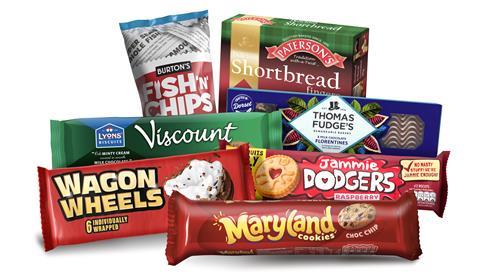
Target: Burton’s Biscuit Co
Acquirer: Ferrero
Value: £360m
Date: 1 June
Italian chocolatier Ferrero fought off fierce competition from rivals such as Valeo and Bain Capital to acquire Burton’s Biscuits from Ontario Teachers’ Pension Plan. The deal continued Ferrero’s push both into the UK and the wider sweet biscuit category, where it is already the second-largest player in the world following acquisitions including Fox’s Biscuits last year.
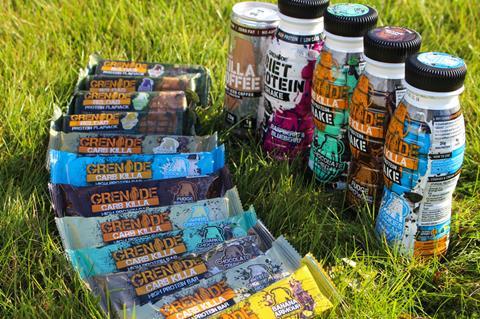
Target: Grenade UK
Acquirer: Mondelez International
Value: £200m
Date: 22 March
The US food giant’s acquisition of the high-protein, low-sugar bars, shakes and spreads supplier marks its first in the UK since its high-profile takeover of Cadbury in 2010. The deal is part of Mondelez’s aim to diversify into healthier snacking, with Grenade having grown rapidly in recent years in UK retail and exporting to more than 50 countries worldwide.
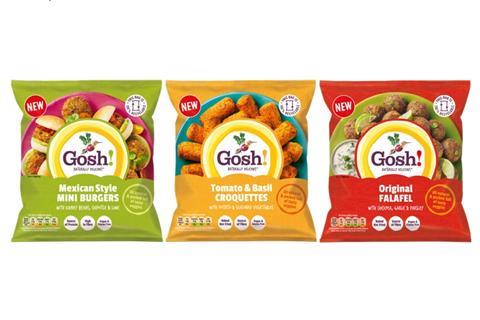
Target: Gosh
Acquirer: Sonae
Value: £64m
Date: 7 September
Portuguese food group Sonae acquired 95% of shares in vegan and free-from player Gosh almost three years after its former owner put the brand up for sale. The vegan falafel bites, burgers and sausages supplier has grown rapidly on the back of the rise in ‘flexitarianism’ with sales surging from £5m in 2016 to more than £20m in its latest accounts.
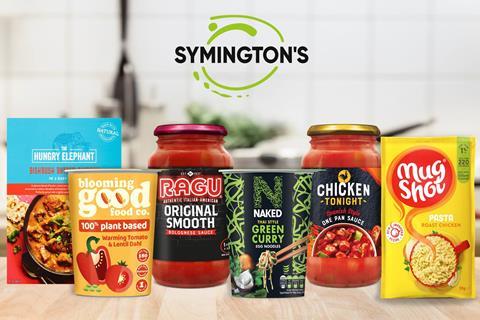
Target: Symington’s
Acquirer: Newlat Food
Value: £53m
Date: 4 August
Italian dairy and pasta group Newlat Food entered the UK with the acquisition of Naked and Chicken Tonight maker Symington’s, as part of its plan to grow sales to €1bn across Europe. Despite booming demand for Symington’s brands during the Covid period, the sale price represented a smaller sum than when ICG acquired the business in a £72m buyout in 2012.
For Browne, the long-term answer lies in relying less on people, and more on automation. “UK plc has had lower productivity for many years and it reflects the cost of labour,” he says. “If that’s going to change and the cost of labour is going to go higher, then the payback period on capital investment comes down.”
It’s a convincing argument – yet there is scant evidence of investment in factories and automation. Top 150 capital expenditure as a proportion of revenues fell from 3.3% to 2.7%, as 56% of companies reduced capital spend to focus on overcoming Covid disruptions.
Hayllar says the industry is now at a “pivotal moment” where the “rubber really needs to hit the road” in finding these solutions. It doesn’t need to be big steel constructions and robots – he suggests investment in IT systems to make more efficient use of materials or better data to improve crop management.
“This is going to be a big area of distinction between winners and losers,” he says. “Those with the balance sheet strength to support the sort of transformation that needs to happen are in a good position, but those that struggle to fund this will be left behind.”
That’s not to say every supplier needs to shift to a highly automated model, of course. As Hayllar points out, some will be able to charge a premium for artisanal goods. “It’s about identifying where labour is really valuable and where it’s not,” he says.
“The idea that if prices go up people buy less, or downtrade, is a little over-exaggerated”
Nonetheless, more efficiency costs money. While debt and borrowing have been historically cheap, expected rises in interest rates are likely to make the funding of these major capital projects more expensive, even if financial institutions remain keen to provide capital to the industry. And, as suppliers wait to recover this investment through efficiencies, there is likely to be pressure on margins.
So it’s fair to say the outlook is challenging. Still, there is a glimmer of light. While economic weakness could see a rebound in own label, especially if the discounters regain share, food and drink should remain relatively immune to downtrading.
First, as Rothschild’s Sachak says, consumers have “lots of cash in their pockets because they haven’t been able to spend during lockdown”. Second, premium food and drink offers much more affordable indulgence than higher ticket items like electronics or holidays. “Food and drink are low-price necessities where you can treat yourself. I think the idea that if prices go up people buy less, or downtrade, is a little over-exaggerated,” says Deboo.
The food and drink industry is often said to be counter-cyclical, outperforming during tougher economic times. Certainly the demand for high-quality, on-trend products is undimmed – the challenge now is to create the structural resilience to meet it.
Those that have this resilience will overcome the next hurdles, however high they appear now.
Downloads
OC&C Top 150 2021
PDF, Size 0.11 mb







![final_high[82]](https://dmrqkbkq8el9i.cloudfront.net/Pictures/480x270/8/5/3/249853_final_high82_197830_crop.jpg)

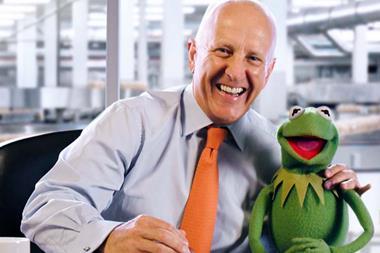
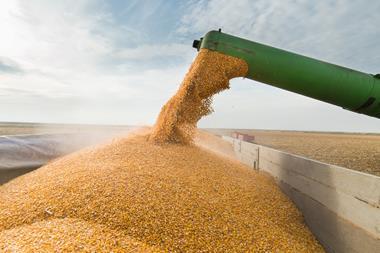
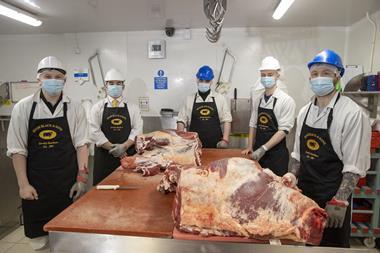
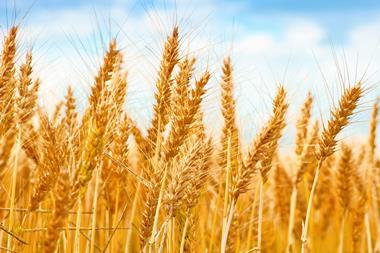







No comments yet